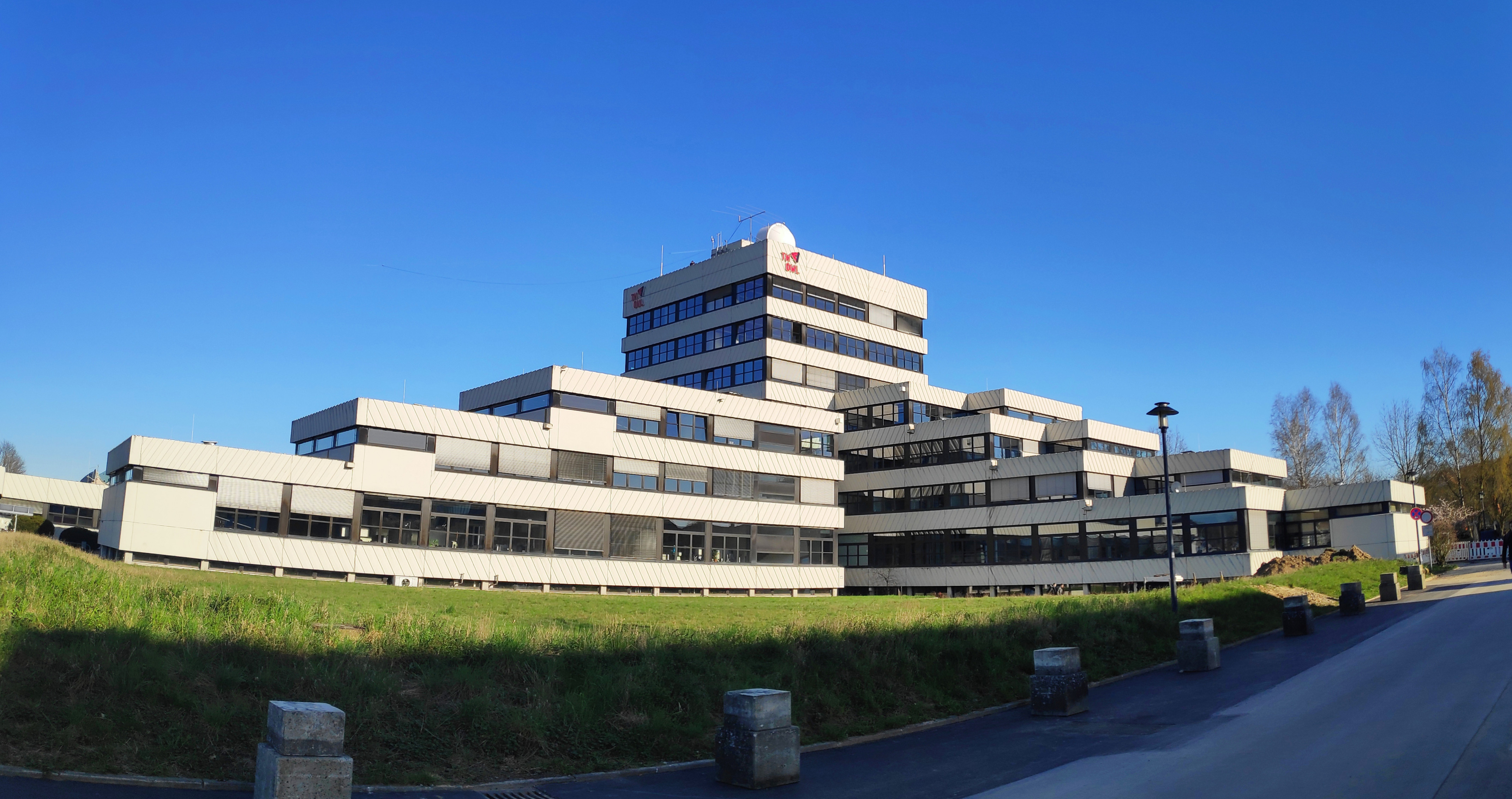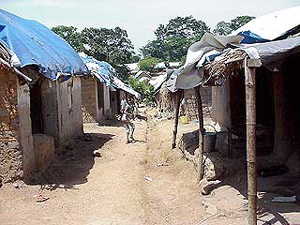|
Lemgo
Lemgo (; ) is a university and old Hanseatic League, Hanseatic town in the Lippe district of North Rhine-Westphalia, Germany. It is situated between the Teutoburg Forest and the Weser Uplands, 25 km east of Bielefeld and 70 km west of Hannover. Lemgo is the oldest town in the former principality of Lippe and has a population of c. 45,000 and belongs to the Ostwestfalen-Lippe, OWL region, which is one of the most important cluster regions for mechanical engineering and industrial electronics in Germany. In 2017 the German Internet portal reisereporter.de placed Lemgo among the most beautiful ten Timber framing, half-timbered towns in Germany. History It was founded 1190 by Bernard II, Lord of Lippe at the crossroad of two merchant routes. Therefore it is the oldest town in the Lippe district. Lemgo was a member of the Hanseatic League, a medieval trading association of free or autonomous cities in several northern European countries such as the Netherlands, Germany an ... [...More Info...] [...Related Items...] OR: [Wikipedia] [Google] [Baidu] |
Hanseatic League
The Hanseatic League was a Middle Ages, medieval commercial and defensive network of merchant guilds and market towns in Central Europe, Central and Northern Europe, Northern Europe. Growing from a few Northern Germany, North German towns in the late 12th century, the League expanded between the 13th and 15th centuries and ultimately encompassed nearly 200 settlements across eight modern-day countries, ranging from Tallinn in Estonia in the east, Bergen (Bjørgvin) in Norway to the North to the Netherlands in the west, and extended inland as far as Cologne, Prussia (region), the Prussian regions and Kraków, Poland. The League began as a collection of loosely associated groups of German traders and towns aiming to expand their commercial interests, including protection against robbery. Over time, these arrangements evolved into the League, offering traders toll privileges and protection on affiliated territory and trade routes. Economic interdependence and familial connections am ... [...More Info...] [...Related Items...] OR: [Wikipedia] [Google] [Baidu] |
Battle Of Vlotho
The Battle of Vlotho was fought on 17 October 1638. It was a victory for the Imperial Army under the command of Field Marshal Melchior von Hatzfeldt, and ended the attempt by Charles I Louis, Elector Palatine, to recapture the Electoral Palatinate. Background Frederick V, the Winter King, had died in 1632. The desire to recover the Palatinate, which had sparked English intervention in the Thirty Years' War in the previous years was at this point disregarded by most. In 1638 Charles Louis, 2nd son and heir of Frederick made one last attempt to recover his territories. Choosing as his base of operations the town of Meppen, on the Münster-East Frisian frontier, he raised a force of 4,000 men using English gold. Alongside Charles Louis were his brother Prince Rupert and a company of English gallants dedicated to the Winter Queen, including Lord Craven, and the Earl of Northampton. To assist Charles Louis, the commander of the Swedish army Johan Banér sent Charles Louis a 1 ... [...More Info...] [...Related Items...] OR: [Wikipedia] [Google] [Baidu] |
Fraunhofer Society
The Fraunhofer Society () is a German publicly-owned research organization with 76institutes spread throughout Germany, each focusing on different fields of applied science (as opposed to the Max Planck Society, which works primarily on Basic research, basic science). With some 30,800 employees, mainly scientists and engineers, and with an annual research budget of about €3.0billion, it is the biggest organization for applied research and development services in Europe. It is named after Joseph von Fraunhofer who, as a scientist, an engineer, and an entrepreneur, is said to have superbly exemplified the goals of the society. Some basic funding for the Fraunhofer Society is provided by the state (the German public, through the federal government together with the states or ''States of Germany, Länder'', "owns" the Fraunhofer Society), but more than 70% of the funding is earned through contract work, either for government-sponsored projects or from industry. Since the 1990s th ... [...More Info...] [...Related Items...] OR: [Wikipedia] [Google] [Baidu] |
Ostwestfalen-Lippe University Of Applied Sciences
The TH OWL University of Applied Sciences and Arts (German: Technische Hochschule Ostwestfalen-Lippe, abbreviated: TH OWL) is a state tech university in the Ostwestfalen-Lippe area in Lemgo, which is part of North Rhine-Westphalia. Additional campuses are in Detmold and Höxter. About 6,600 students work closely with 173 professors and about 550 other staff members in research, teaching and administration. For several years, the university has been one of the ten most research-intensive universities of applied sciences in Germany. Due to its research performance, it was admitted to the European University Association in 2010. Locations Historically, the locations have distinguished themselves as follows: Lemgo is the main campus and home to the engineering disciplines of the THOWL. The departments of Life Science Technologies, Electrical Engineering and Computer Science, Mechanical Engineering and Mechatronics, Production and Wood Engineering as well as Economics are loca ... [...More Info...] [...Related Items...] OR: [Wikipedia] [Google] [Baidu] |
Wehrmacht
The ''Wehrmacht'' (, ) were the unified armed forces of Nazi Germany from 1935 to 1945. It consisted of the German Army (1935–1945), ''Heer'' (army), the ''Kriegsmarine'' (navy) and the ''Luftwaffe'' (air force). The designation "''Wehrmacht''" replaced the previously used term (''Reich Defence'') and was the manifestation of the Nazi regime's efforts to German rearmament, rearm Germany to a greater extent than the Treaty of Versailles permitted. After the Adolf Hitler's rise to power, Nazi rise to power in 1933, one of Adolf Hitler's most overt and bellicose moves was to establish the ''Wehrmacht'', a modern offensively-capable armed force, fulfilling the Nazi regime's long-term goals of regaining lost territory as well as gaining new territory and dominating its neighbours. This required the reinstatement of conscription and massive investment and Military budget, defence spending on the arms industry. The ''Wehrmacht'' formed the heart of Germany's politico-military po ... [...More Info...] [...Related Items...] OR: [Wikipedia] [Google] [Baidu] |
Displaced Persons Camp
A refugee camp is a temporary settlement built to receive refugees and people in refugee-like situations. Refugee camps usually accommodate displaced people who have fled their home country, but camps are also made for internally displaced people. Usually, refugees seek asylum after they have escaped war in their home countries, but some camps also house environmental and economic migrants. Camps with over a hundred thousand people are common, but as of 2012, the average-sized camp housed around 11,400. They are usually built and run by a government, the United Nations, international organizations (such as the International Committee of the Red Cross), or non-governmental organization. Unofficial refugee camps, such as Idomeni in Greece or the Calais jungle in France, are where refugees are largely left without the support of governments or international organizations. Refugee camps generally develop in an impromptu fashion with the aim of meeting basic human needs for ... [...More Info...] [...Related Items...] OR: [Wikipedia] [Google] [Baidu] |
Royal Irish Regiment (formed 1992)
The Royal Irish Regiment (27th (Inniskilling), 83rd, 87th and The Ulster Defence Regiment) (R IRISH) is a light infantry regiment of the British Army. The regiment was founded in 1992 through the amalgamation of the Royal Irish Rangers and the Ulster Defence Regiment. Their oldest predecessor, the 27th Regiment of Foot, was first raised in June 1689 to fight in the Williamite War in Ireland. Other notable regiments in their lineage include the Royal Inniskilling Fusiliers, Royal Irish Rifles and the Royal Irish Fusiliers (Princess Victoria's). The motto of the regiment is '' Faugh A Ballagh'' (Modern Irish: ''Fág an Bealach''), derived from the Irish Gaelic phrase for "Clear the Way". This originates from the Peninsular War when Ensign Edward Keogh of the 87th Regiment of Foot let out the cry while capturing a French Imperial Eagle at the Battle of Barrosa. The Regimental Headquarters of the Royal Irish Regiment has been Palace Barracks in County Down, Northern Ireland since m ... [...More Info...] [...Related Items...] OR: [Wikipedia] [Google] [Baidu] |
Classis (ecclesiastical)
Presbyterian (or presbyteral) polity is a method of church governance ("ecclesiastical polity") typified by the rule of assemblies of presbyters, or elders. Each local church is governed by a body of elected elders usually called the session (or consistory), though other terms, such as ''church board'', may apply.For example, the Church of the Nazarene, which subscribes to a body of religious doctrines that are quite distinct from those of most properly named Presbyterian denominations (and which instead descends historically from the Wesleyan Holiness Movement), employs a blend of congregationalist, episcopal, and presbyterian polities; its local churches are governed by an elected body known as the church board or simply "board members"; the term elder in the Nazarene Church has a different use entirely, referring to an ordained minister of that denomination. Groups of local churches are governed by a higher assembly of elders known as the presbytery or classis; presbyteries ... [...More Info...] [...Related Items...] OR: [Wikipedia] [Google] [Baidu] |




